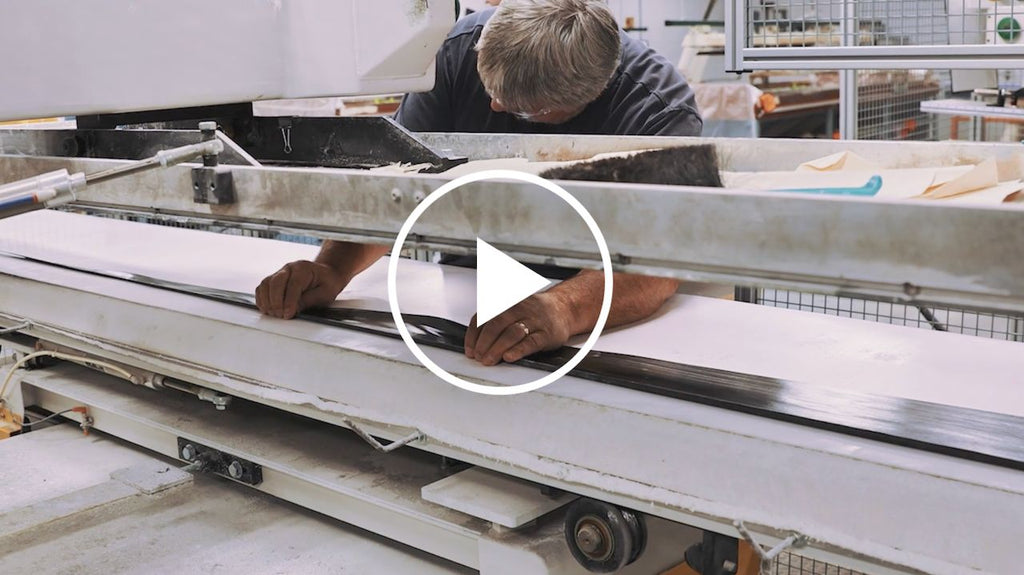How It’s Made
The Cold Fabrication Process
December 05, 2022

Every St. Croix rod begins with a specific blank, handcrafted to exacting specifications right here in North America – at either Park Falls, Wisconsin or St. Croix South in Fresnillo, Mexico. Every rod blank is unique in its combination of length, power, action and materials, and each begins with the process known as Cold Fabrication.
“Cold fab involves taking raw materials and combining them and shaping them to the exact design and performance specifications dictated by our Engineering and Product Teams,” says St. Croix Vice President of Research and Development, Jason Brunner. “We handcraft over 800 rod blanks designed to give anglers the upper hand on the water, and each one is distinct in terms of its length, power, action, material composition, and finish.
Cold fab basically involves cutting the various raw materials into precise patterns, combining and tacking those patterns together to spec, then carefully rolling them onto the various steel mandrels that give the blanks their shape. In essence, St. Croix follows a precise recipe for each blank its rod crafters produce.
“The first step is pattern cutting,” Brunner says. “Raw materials come in sheet form. Our engineers design the precise patterns for each material used in each blank. Those patterns are nested into software then translated to our CNC pattern-cutting machines. Those machines produce the incredibly precise patterns that make up each St. Croix rod. All rod blanks have at least two patterns, while others have as many as 13 incorporating up to four distinct materials”
Tacking is the next step in the cold fab process. “Our skilled cold-fab team members use hot irons to tack or attach the straight, leading edges of the patterns to the specific mandrels that will give each finished rod blank its form,” says Brunner. “Each steel mandrel is precision-engineered and manufactured to exacting specifications to ensure the correct taper for each individual rod we craft.”
Rolling is next. “Once the patterns are precisely tacked to the mandrels, they go into specialized rolling machines that roll the patterns around the mandrels,” Brunner says. “Like the recipe for the specific shapes and locations of the patterns themselves, the rolling machines also follow a very specific recipe in terms of the amount of pressure and stroke they apply during the rolling process. Every blank has a different setup that follows precise design specifications.”
Tape wrapping is the final step in the cold fab process. “Our raw materials come pre-impregnated with resin, so the blanks are still uncured when they come out of the rolling machines,” Brunner says. “Our team members must apply a polypropylene tape material to the outer layer of each uncured blank, which serves to compact the carbon material around the mandrel and remove any voids within the layup. It’s like an eggshell which contains and keeps the materials in shape around the mandrel until the blanks go for curing in our computer-controlled ovens. Per the recipe analogy, all rod models have different tape-spacing requirements and specifications.”
Brunner says consistency is the primary key to the cold fabrication process. “From the precise manner to the way the materials are cut, to the great care used in the tacking process and our computer-controlled rolling machines, each distinct St. Croix rod blank is crafted with complete consistency to ensure it performs to its intended design standards. The environment in which the process takes place is also important, as our raw materials are very sensitive to temperature and humidity – both of which are carefully controlled and monitored throughout the cold fabrication process.”

The Best Rods on Earth® begin with precision-designed and carefully crafted rod blanks. Consistency within the cold-fabrication process is key to making sure every St. Croix rod will deliver anglers an elevated experience on the water.

